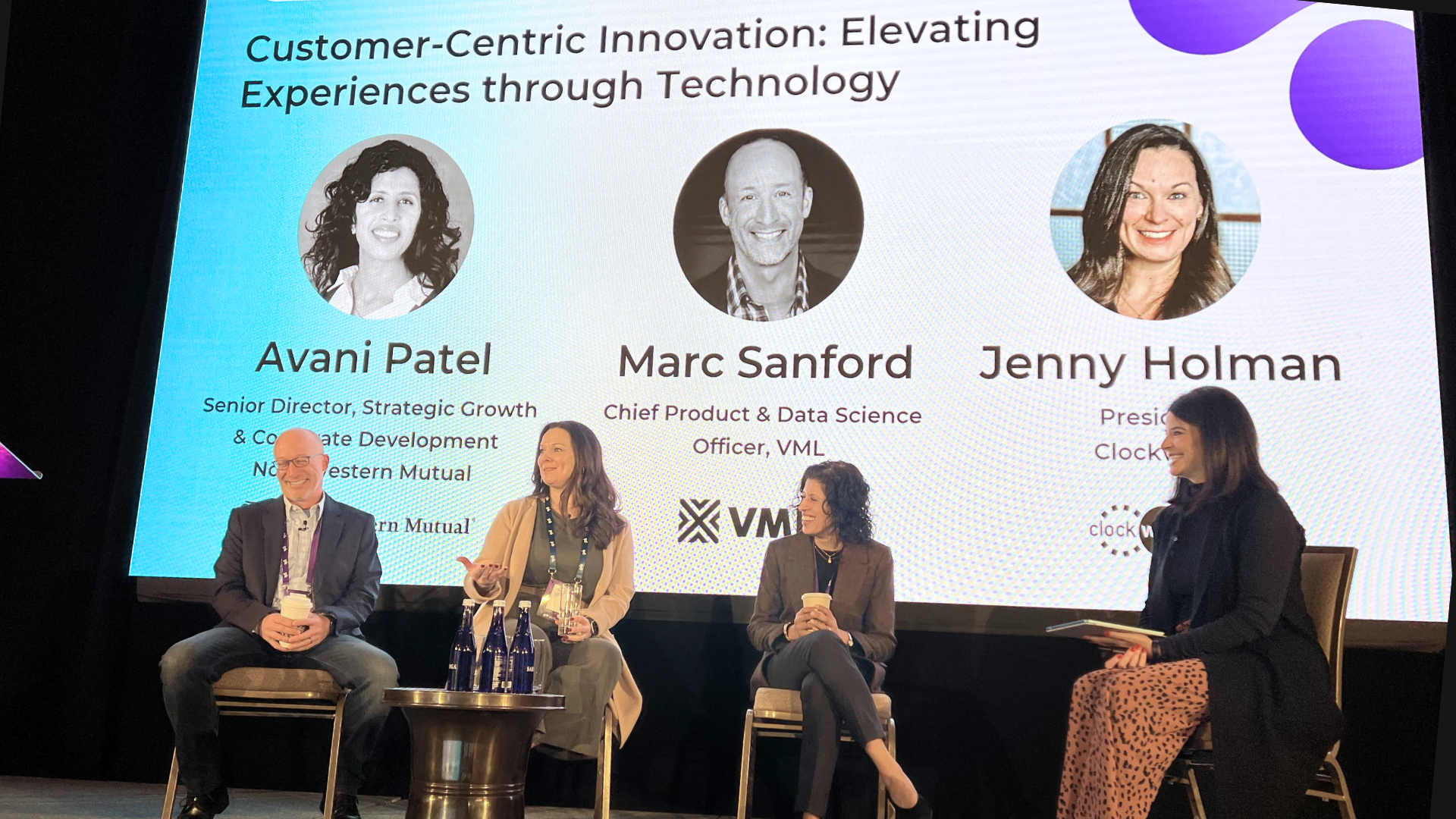Empowered consumers & value-based care
This age of empowered healthcare consumers puts an enormous demand on hospital systems, insurers, providers, and caregivers at every level. Patients gravitate towards providers who offer personalized health care with experiences and options tailored to their needs. This shift impacts more than 60% of health care spending.
Human-centered healthcare requires a human-centered approach to online experience design. The patient experience was once limited to face-to-face interactions with providers and recommendations from friends, family, and doctors. It’s now influenced by social media, quality of digital interactions, online availability, accurate information, follow-up, ease of billing, and more. Every interaction a patient has with a healthcare system contributes to their experience.
Value-based care initiatives to improve quality and lower cost of care increase the pressure on technology to work harder. Clinical priorities include closed care gaps, improved HEDIS measures, completed annual wellness visits, avoided emergency room visits, and reduced inpatient admissions. Online experiences impact all of these measures.
With the proper systems in place, personalized health care to patients yields direct financial benefits. Hospitals with excellent HCAHPS patient experience ratings have a net margin of 4.7% compared to hospitals with low ratings (1.8% net margins).
What it looks like
People require wellness and mental health care as well as chronic condition management. And, they want to feel good and cared for throughout their experience. 90% of people want an option to manage their health care online. Systems, providers, and insurers have made enormous strides to provide these experiences. Continued improvement will strengthen the relationship with patients and improve outcomes.
- Digital experiences: websites & portals
- Telehealth, virtual care, RPM, & mHealth acceleration
- EHR & interoperable exchange of health information
Digital experiences: websites & portals
Patient and member experiences on websites and portals are Matryoshka dolls based on permissions, user data, and patient information. People want privacy when exploring options and also expect content tailored to their needs. Patients and members hope for comprehensive and personalized health care information while expecting clarity and ease of use.
Personalization engines & website conversion
By using personalization engines and information about the user, digital experiences can be customized in realtime. On first visits, contextual changes are made based on location and platform/device. Behavioral changes can be made based on cookie and UTM tracking and according to paths through the site. Using whitepapers or other gated content to capture additional information allows further personalization — greeting the visitor with their name, auto-filling forms, or promoting content based on the visitor’s previously viewed content.
Presenting the information that your visitors find the most valuable amplifies your content’s value while simplifying your visitor’s experience. Additionally, tracking these market segments over time can inform you on what content you’re missing and how to prioritize your content creation efforts.
Revel Health and Novu merged to become Icario Health to provide a powerfully personal active health platform. Icario uses technology and intelligent rewards to motivate good health actions. Their website leverages personalization engines integrated with their CRM for dynamic experiences for their users. Personalization engines provide tailored “bottom of the funnel” experiences for Medicaid, Medicare, and Point Solutions decision-makers looking for the right solution for healthcare consumers.
Patient & member portals
According to the Medical Group Management Association (MGMA), 90% of health care systems offer patient and member portals. Used to share important information with patients regarding upcoming appointments, immunizations, benefits and coverage, and other educational materials on their health conditions; patient portals have vastly improved the ability for people to manage components of healthcare. From scheduling an appointment and messaging physicians to requesting a prescription refill and making payments, patients have more online interaction than ever before.
Providing a robust set of features that patients and members need now while creating a roadmap for future requirements is a challenge. The member portal for Further, a leading administrator of health spending, is modular. Using components as building blocks, pieces can be swapped out or overridden depending on configuration needs. In this way, the new portal allows Further to serve both sets of customers — their members and their business partners — in a user-centered manner and bring value to their entire customer base.
To deliver on their promise of exceptional experiences for 200,000 accounts, Further required numerous complex integrations: cloud object storage, multiple SSOs, Tax Docs, their internal system along with new APIs, a headless CMS, caching systems, pipeline automation, containers and container registries, log aggregation, and monitoring.
Portals & PGHD
Only 43% of patient portals accept patient-generated health data (PGHD) for clinician review. That leaves significant opportunity for increased adoption. PGHD provides important information about what and how people are doing between medical visits. PGHD also informs shared decision-making about preventive and chronic condition management. The opportunities for cost savings and improvements in quality, care coordination, and patient safety are enormous.
In addition to health and treatment history, information like biometric data, symptoms, and behavior can be captured regularly to inform treatment and care. It can then be used to provide tailored messages and education. Telehealth, including synchronous and asynchronous video conferencing, remote patient monitoring (RPM), and mobile health (mHealth) offer avenues for patient engagement and personalized health care.
Telehealth, virtual care, RPM, & mHealth acceleration
There has been a forced acceleration of telehealth capabilities and accessibility. Patients and care providers can interact via live (synchronous) videoconferencing, mimicking in-person appointments. Patients can also use store-and-forward (asynchronous) video conferencing to provide information to health practitioners. Remote patient monitoring (RPM) provides data via invasive and non-invasive devices, and mobile health (mHealth) has transformed communication and messaging.
Even before the COVID-19 pandemic, 39% of millennials sought virtual care over traditional care. While the interest in digital care has been steadily growing over the last several years, COVID-19 forced both patients and providers from in-person care to digital care. Now, providers are seeing 50-175 times more patients using telehealth than before COVID-19 struck.
These interactions offer opportunities to identify and intervene with high-risk patients earlier and reduce ER visits, hospital admissions, and readmissions. The promise is reduced healthcare costs across the full cost spectrum, and improved health outcomes and patient satisfaction. There are also increased revenue reimbursement incentives for providers. But, effective and impactful telehealth also requires efficient processes to monitor, assess, and manage care and relies on PGHD. And the smart use of that patient health data.
Digital health devices & RPM
Remote Patient Monitoring (RPM) devices, including pacemakers and implantable cardiac defibrillators (ICD), have been around since the 1970s. In addition to these invasive devices and patient input of PGHD via apps or portal, non-invasive digital health devices and wearable tech (e.g. Apple Watch and Fitbit) also collect PGHD. However, accuracy and user authentication for research purposes is still an issue. For example, popular wearables are consistently inaccurate at measuring energy expenditure and don’t meet the gold standard of the metabolic chamber. Additionally, the risk of an account or device being shared between people can undermine the integrity of RPM data.
But, for PGHD to track (and motivate) patient behavior between medical visits, these devices are a powerful RPM tool to improve integrated care and health outcomes. From supporting physical therapy for knee and joint replacement to encouraging increased activity after surgery, devices provide a proxy for the provider in the daily lives of patients. And provide critical data to personalize experiences.
The future of mHealth
In addition to tailored content and critical notifications, mHealth has become a space of sophisticated health and lifestyle management. FirstLine Benefits, a division of Optum/UnitedHealth Group, launched a cross-platform application on Android & iPhone to allow their members to use and manage their benefits, as well as shop an expansive online catalog of OTC and groceries and have products shipped directly to their home. In addition to creating an additional revenue stream and providing more options to members, FirstLine Benefits can personalize experiences based on behavior and preferences.
Chatbots
Chatbots are growing in popularity, with the health care chatbot market expected to grow by 25% between 2019 and 2025. This automated online tool holds the potential to help patients manage their health. It can do this by providing patients with medical information about their existing health conditions like what it is, causes, how to manage it, etc. While chatbots won’t replace the need to see a physician, they can enhance the care received both in-person and digitally. Additionally, this same technology can help streamline administrative processes such as scheduling appointments, finding local care facilities, and accessing forms and paperwork.
EHR & interoperable exchange of health information
88% of U.S. hospitals electronically send patient health information to recipients outside the system. 74% receive patient health information from outside health care providers. Yet, only 53% electronically integrate patient summary of care records from outside providers into an EHR without manual entry. Interoperable exchange of health information across the care continuum is critical for operational efficiency and integrated patient care.
With the EHR market dominated by Epic, Cerner, and MEDITECH (Epic and Cerner with 50%+ of the market), increasing interoperability is viable. With manual entry, there is a risk of incorrect or incomplete information, undermining a holistic human-centered approach to the patient experience.
Health systems recognize the importance of having proper HIT systems in place. 80% of health system CFOs acknowledge its role in staying competitive in today’s market and providing quality patient care. Despite this, getting these systems integrated continues to be a significant challenge for most health systems. This challenge contributes to the failure of digital transformation efforts and frustrates the ability to deliver exceptional patient and member experiences. The pressure is only increasing.
Personalized health care for everyone
The COVID-19 pandemic has been a crucible, exerting enormous pressure on people, processes, and technology. Through the requirements of remote working and providing care, digital transformation has been accelerated. Personalized health care serves patients by providing better experiences and outcomes. It also benefits healthcare organizations by leveraging automation and data to reduce the load on administrators and care providers.
The Institute for Healthcare Improvement, in its Triple Aim framework, identifies the goal of “simultaneously improving the health of the population, enhancing the experience and outcomes of the patient, and reducing per capita cost of care for the benefit of communities.” Personalization is key to meeting these ambitious goals.




